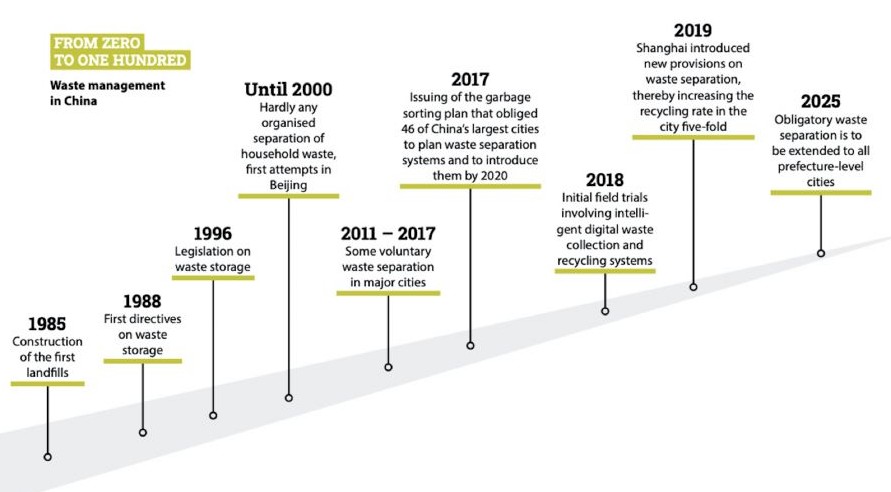Recycling in China: From zero to hero?
It is rare to see the president of a superpower personally attend to waste separation issues. Chinese President Xi Jinping did just that in November 2018 when he gave a speech in which he strongly admonished the citizens of his country to improve the way they sorted their waste.
For a good 20 years, China has tried to increase its recycling rate, with only modest success so far. In 2019, different reports put that rate at 5% to 20%. There is no reliable statistical data on this subject. The estimate of 20%, which is at the upper end of the spectrum, comes from a journal closely affiliated with the Chinese Ministry of Ecology and Environment. The more developed a country becomes and the greater prosperity it feels in even remote regions, the more urgent become its recycling problems. At present, China is already producing more waste than the United States, a nation known for its consumerism. By 2030, the World Economic Forum estimates that China will have double the household waste volume of America.

Stiff fines
In 2019, amidst great fanfare in the media, Shanghai became one of the first major Chinese cities to revamp its waste collection system. Waste collection sites were set up across the entire city. From then on, anyone who failed to neatly separate kitchen waste, dry waste, recyclable waste, and hazardous waste faced stiff fines: up to 200 yuan (about 25 euros) for private individuals and up to 50,000 yuan (about 6,460 euros) for businesses. And as with many other offenses, the fine triggers the entry of negative points for individual citizens on their social credit rating account. Anyone who chalks up too many negative points is deemed less creditworthy at Chinese banks, for example. At the same time, the introduction of the new waste collection system was accompanied by a massive information campaign, not just in schools and the media but also locally at the waste collection sites, where volunteers educated the public.
You can return to the main Market News page, or press the Back button on your browser.

